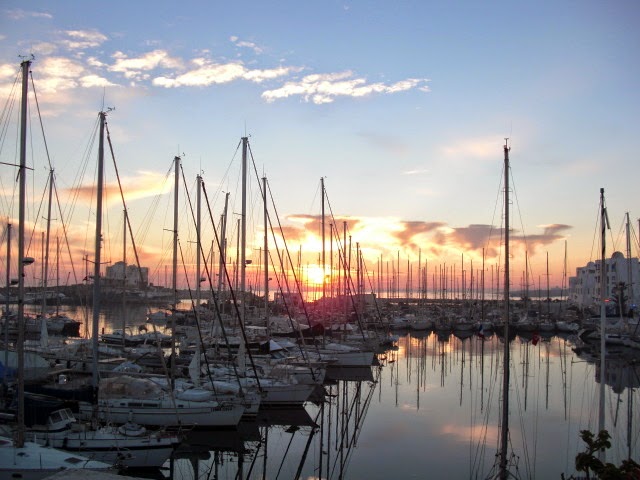 |
| Sidi Bou Said |
 |
| Roman mosaics, Bardo museum |
 |
| Grinning mask, 6th century BC, Carthage |
 |
| Roman mosaic, Bardo museum |
 |
| Roman mosaic, Bardo museum |
 |
| Porte de France, Tunis |
 |
| Zitouna mosque, Tunis |
 |
| Tunis |
 |
| Stelae, Tophet, Carthage |
 |
| Stele, Tophet, Carthage |
 |
| Stelae, Tophet, Carthage |
 |
| Punic Ports, Carthage |
 |
| Antonine Baths, Carthage |
 |
| Antonine Baths, Carthage |
 |
| Antonine Baths, Carthage |
 |
| Sidi Bou Said |
The beautiful cliff top village of Sidi Bou Said has been a favourite haunt for many artists and writers over the years including Paul Klee, August Macke, Cervantes and Simone de Beauvoir. The village was discovered by wealthy French and other expats who bought houses at the beginning of the twentieth century. They wanted to preserve the town's character and in 1912 Baron Rodolphe d'Erlanger passed a bye-law stating that all houses had to be painted blue and white. Today it is a retreat for wealthy Tunisians and tourists alike but it is still enchantingly pretty. We collapsed in Café de Nattes, famously painted by August Macke, for a well earned drink and rest before finally catching the train back to Tunis.






No comments:
Post a Comment